Minggu, 17 Mei 2009
THE SPUN PRESTRESSED CONCRETE DESIGN AND MATERIALS
The Poles are designed as member subjected primarily to flexure. Axial load effects should be considered since large considered since large secondary moments may occur due to the deflection of the pole. In the case of guyed poles, the axial loads may be large enough that the pole should be treated as a compression member. Shear and torsion may be significant in some cases but seldom control the design.
The piles are designed as member subjected to axial and flexure. Both axial load and flexure should be considered together because this component is used as part of the foundation, and they support the gravity load as well as the lateral loads which cause bending and shear action on it (earthquake). The codes used as the standard design are JIS A 5335, ACI 543, and Indonesian Concrete Codes (PBI).
Currently concrete design strength range from 50 to 65 MPa. In many cases; however, spun cylinders are made to take advantage of the increased compressive strength due to spinning. The reinforcing steel cage is composed of main and secondary steel. High strength, wire prestressing strand or prestressing wire oriented in the longitudinal direction comprise the main steel reinforcement. Closely spaced spiral steel wire wrapped around the strands provides the necessary secondary reinforcement. The spiral reinforcement, which is normally 5-mm diameter, with yield strength up to 400 MPa, is needed to resist temperature stresses, transfer forces at end parts, and contribute to the torsion and shear strength of the member.
The piles are designed as member subjected to axial and flexure. Both axial load and flexure should be considered together because this component is used as part of the foundation, and they support the gravity load as well as the lateral loads which cause bending and shear action on it (earthquake). The codes used as the standard design are JIS A 5335, ACI 543, and Indonesian Concrete Codes (PBI).
Currently concrete design strength range from 50 to 65 MPa. In many cases; however, spun cylinders are made to take advantage of the increased compressive strength due to spinning. The reinforcing steel cage is composed of main and secondary steel. High strength, wire prestressing strand or prestressing wire oriented in the longitudinal direction comprise the main steel reinforcement. Closely spaced spiral steel wire wrapped around the strands provides the necessary secondary reinforcement. The spiral reinforcement, which is normally 5-mm diameter, with yield strength up to 400 MPa, is needed to resist temperature stresses, transfer forces at end parts, and contribute to the torsion and shear strength of the member.
Langganan:
Posting Komentar (Atom)



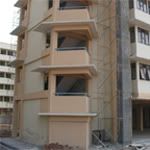
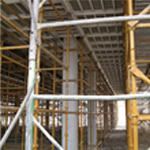
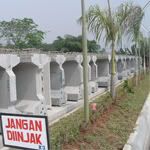
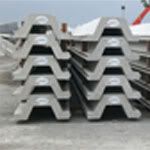


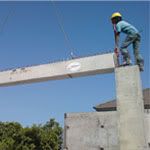

Comments :
0 komentar to “THE SPUN PRESTRESSED CONCRETE DESIGN AND MATERIALS”
Posting Komentar